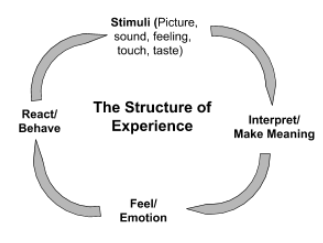**Understand that I’m writing this email to myself first and foremost today.**
I have always been the type of person who wears my emotions on my sleeve.
Sometimes this can be a really good thing, like when I’m cheering on my son’s basketball team from the stands in a close game. My outward passion and excitement can help motivate the team to bring their best and play at a higher level--especially in critical moments.
However, there other times (like in the story I wrote to you about last week when I reacted angrily to my wife after she pointed out that the kitchen faucet didn’t work properly after I had tried to repair it...twice) when wearing my emotions on my sleeve can serve as damaging and destructive.
[In case you missed last week’s email, you can read it here.]
I know I’m not alone on this one. I received several emails last week from people in response to my story indicating that they experience the same challenges.
Here’s what I know: If we intend to be the kind of leaders who live lives of sustained influence, then we must own the responsibility of managing our emotions in a way that enables us to build trust and strengthen relationships, rather than to make messes everywhere we go.
This is the essence of self-leadership.
So how do we handle these situations in a way that enables us to respond in healthy ways when we feel triggered instead of reacting angrily?
I want to leave you with 3 steps that I have found to be very helpful.
The first step is to understand what actually takes place during these “kitchen faucet” experiences. It all starts with something that we experience and input we receive through one of our five senses. This creates a thought. We attach a meaning to this thought based upon thousands of experiences stored away from our past in our non-conscious mind (the part of our minds where all of our beliefs about life, people, authority, ourselves, etc. reside). These pre-existing beliefs evoke a certain feeling, which ultimately controls how we respond or react. All of this occurs in a fraction of a second and is illustrated below:
Understanding how the brain works during these situations when we find ourselves in the grip can help us break the process down and discover where this process goes off the rails.
And in case you haven’t figured it out, the process goes off the rails during the “Interpret/Make Meaning” part of the phase.
The second step is to identify and evaluate the deeper belief that caused you to interpret the experience in an unhealthy way.
In my now infamous “faucet” example, when Moey told me the faucet wasn’t working properly, my reaction of anger was rooted in a deeper belief of inadequacy when it comes to fixing or building stuff.
I grew up on a farm where we were always working on equipment and fixing things. My father was unbelievably gifted mechanically and could build or repair pretty much anything. In my eyes, he was like the Cox Road version of MacGyver.
I, on the other hand, was not. I struggled to see why things weren’t working and the best way to repair them. In fact, there were many times when I would spend an exorbitant amount of time trying to figure out how to fix or build something. Often in those moments, my dad would walk in, look at what I had done, and in about five seconds explain how I could have done it differently or better.
I would walk away from those situations feeling embarrassed and ashamed because I didn’t feel like I measured up to my dad who was my hero. That shame lead to anger and an unhealthy response.
Let’s be honest--it’s hard to break all of this down and understand these feelings at the ripe old age of 10.
But one of the amazing things about being human is that we continue to grow and mature (at least the possibility exists for this...it’s not a given😉). And as we grow and mature, we develop the capacity as adults to step outside of these situations in a dis-associated way and look at them objectively as opportunities to learn and grow. This leads us to the third step.
Replacing the unhealthy belief with something more positive.
Now, as I look back on the result of my “faucet experience”, I realize that I was determining my own value through the lens of my father’s gifts, talents, and possible expectations.
This resulted in an unhealthy belief of being incapable to do things that “men” should be able to do.
Now, in retrospect, I can appreciate that I have different gifts than my dad. Knowing this helps me be kind to myself and understand that it may take me a little longer to tackle mechanical challenges.
This also means that I might employ a different strategy than my dad would in order to be successful--like actually reading the directions when I decide to fix or replace something. :-)
Consistently applying these three steps helps me understand and process negative emotions in a healthy way, rather than reacting in ways that can be damaging to myself and those nearby me.
For short, in future “faucet experiences,” I won’t hear the voice of my father when my wife speaks. I’ll only hear the voice of my wife, who simply wants her faucet to work.


